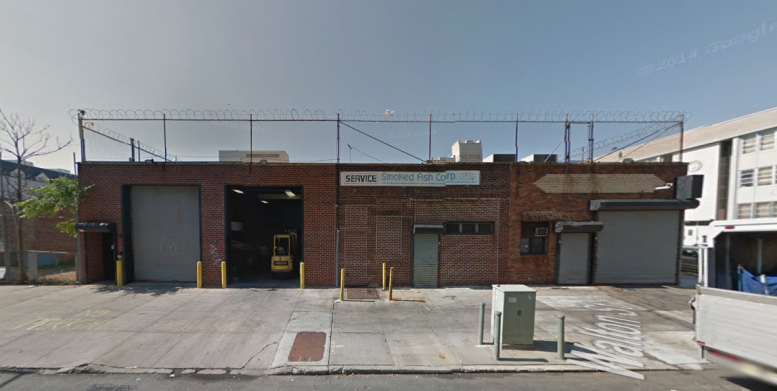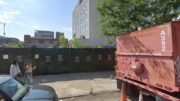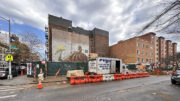After years of stalled sites and legal limbo sparked by a controversial rezoning, development has kicked into high gear in the former industrial patch of South Williamsburg known as the Broadway Triangle. Plans have surfaced for a six-story residential building at 54 Throop Avenue, around the corner from the Lorimer Stop on the J and M trains.
The 65-foot-tall development would replace a garage and smoked fish company between Walton and Wallabout Streets. Building applications filed just before Christmas call for 23 apartments and 30,029 square feet of residential space. With average units measuring 1,300 square feet each, condos seem likely. The developer probably hopes to market them to the Orthodox Jewish families in the neighborhood, who typically look for larger apartments.
A duplex and two half-floor apartments will fill the first two stories, topped by two apartments on the third floor, and six units each on the remaining three floors. There will also be a shared roof deck.
This project joins a six-story, eight-unit development next door at 56 Throop, courtesy of the same developer, Solomon Schwimmer. Each building will have a one-car garage on the first floor – an amenity that isn’t required by the zoning code. Like most small developments in Brooklyn, the units have been divided between two buildings in order to duck the city’s onerous parking requirements.
Asher Hershkowitz applied for the permits.
Buyers of these condos will pay incredibly low property taxes, because the building will receive the 421-a tax abatement. A bit of gerrymandering ensures that all new buildings south of Broadway in Williamsburg get the tax break, but developments in North Williamsburg – and their buyers – don’t qualify for it. Of course, we’re talking about the current 421-a program, which will expire on January 15. The fate of the developer-friendly program hinges on a deal between construction unions and the real estate lobby, and the negotiations aren’t going well, sources told Gotham Gazette last month.
This project is just one of dozens filed in the rush before the old 421-a disappears. If the new 421-a rules take effect, builders will have to set aside at least 25 percent of their units as affordable housing in order to get the tax cut.
Subscribe to the YIMBY newsletter for weekly updates on New York’s top projects
Subscribe to YIMBY’s daily e-mail
Follow YIMBYgram for real-time photo updates
Like YIMBY on Facebook
Follow YIMBY’s Twitter for the latest in YIMBYnews





